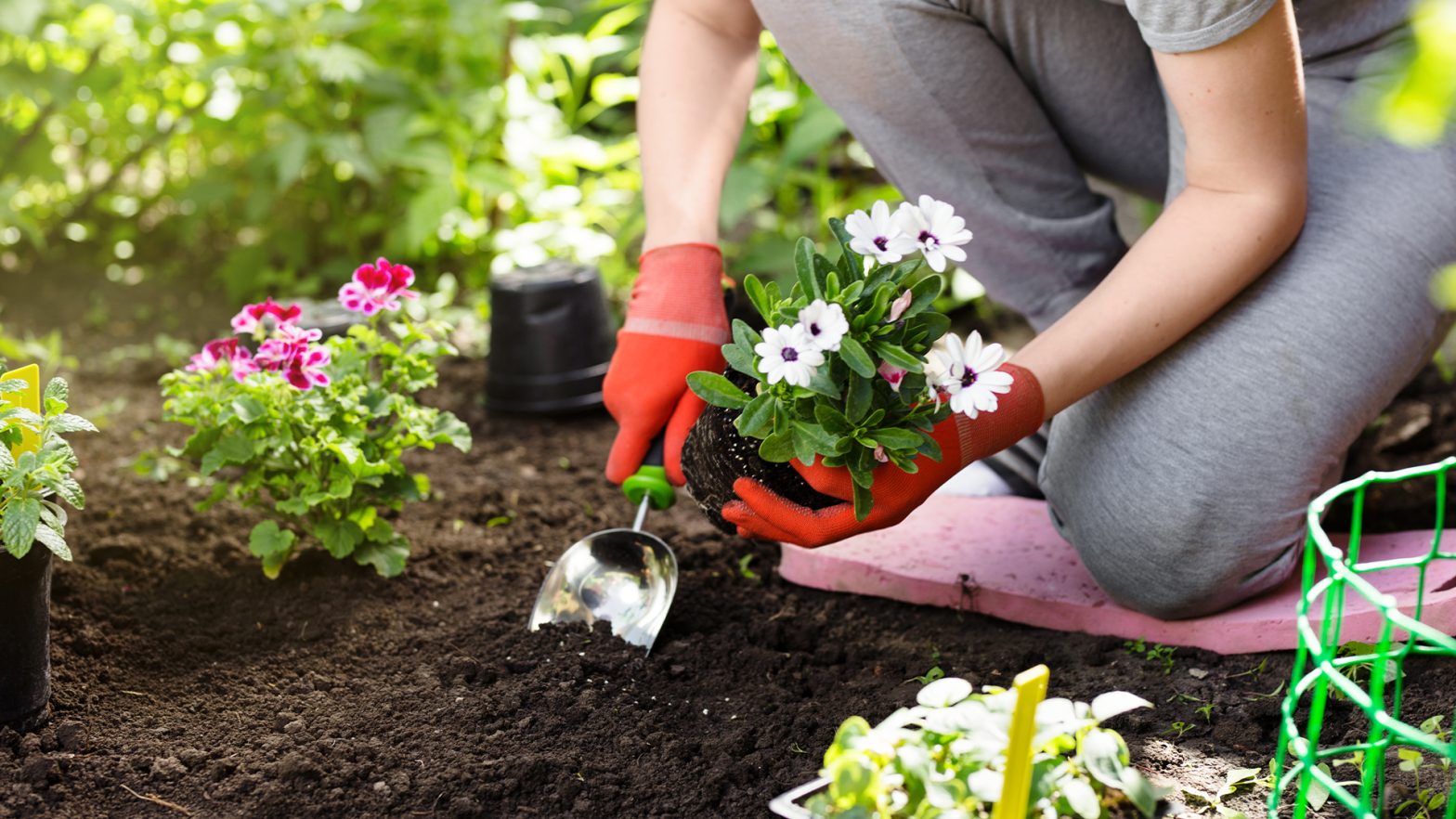
July in the UK – a time for long evenings, sizzling barbecues with friends, and, of course, a lot of colour bursting across your garden. But amidst the sunshine and socialising, there’s still plenty to keep you busy when it comes to gardening. So, what are the essential gardening jobs for this month?
To make sure you don’t miss anything, gardening expert Fiona Jenkins at MyJobQuote.co.uk has created this guide on everything you need to do in the garden in July. Here’s your comprehensive guide to the essential jobs you can do to ensure your garden thrives throughout the summer:
Keep on Top of Watering
Hot weather means thirsty plants! Regular watering is crucial this month, particularly for containers, hanging baskets, and recently planted flowers and vegetables. Aim for the base of the plant rather than the leaves to minimise evaporation. Early morning or evening watering is ideal, as the sun is less intense and less water will be lost to evaporation. Consider investing in a water butt to collect rainwater – a free and environmentally friendly way to water your plants.
A layer of mulch around your plants will help to retain moisture in the soil. This then reduces the need for frequent watering. It also acts as a natural weed suppressant, saving you time and effort in the long run. Choose organic mulches like bark chippings, composted wood chips, or straw, which will decompose over time, adding nutrients back into the soil. For a more decorative touch, consider using pea gravel or chipped slate around shrubs and trees.
Harvesting Your Goods
Don’t allow your vegetables and soft fruits to go to waste! Regularly pick ripe tomatoes, courgettes, beans, strawberries, and raspberries to encourage further growth on the plant. Leaving fruits on the plant past their prime can signal the plant to stop producing.
Once you’ve harvested your goodies, get creative! Use them in delicious salads, summer puddings, and crumbles, or simply enjoy them on their own for a taste of homegrown goodness. For a truly homegrown experience, try preserving some of your harvest through techniques like jamming, pickling, or freezing.
Keep Your Garden Looking Its Best
Regularly deadhead bedding plants and repeat-flowering perennials to encourage continuous blooming. Simply remove spent flowers by pinching them off just below the faded bloom. Deadheading not only ensures your garden stays looking neat and tidy but it also prevents plants from putting their energy into seed production, allowing the plants to focus on producing more flowers instead.
Keep hedges and borders in check with a light trim. This will maintain their shape and encourage bushier growth. Use sharp shears or secateurs for clean cuts and avoid cutting into new growth. For a more formal look, hedges can be trimmed into geometric shapes like squares or balls. However, if you prefer a more relaxed feel, a looser, more natural approach to trimming is perfectly acceptable.
Don’t let weeds steal the limelight. Regularly remove garden weeds to prevent them from competing with your plants for nutrients and water. For stubborn weeds, try a natural weed killer like a vinegar solution or boiling water. You can also physically remove them using a hand fork or weeding trowel.
Sowing and Growing
July is a great time to sow a second crop of fast-growing vegetables like lettuce, spinach, and radishes. These vegetables mature quickly, allowing you to enjoy a fresh harvest later in the summer.
You can also sow seeds like beetroot and oriental greens for autumn harvests. These vegetables will benefit from the cooler temperatures and longer days of late summer and early autumn.
If you have a greenhouse, use it to your advantage. Propagate cuttings from your favourite plants to create new additions to your garden. You can also sow seeds for tender vegetables like peppers, aubergines, and chillies, which thrive in warmer environments. For even more success with your greenhouse, consider installing ventilation to regulate temperature and humidity.
Additional Tips For Gardening In July
Give your flowering plants and vegetables a boost with a liquid feed once a week. This will help them continue to thrive throughout the summer. Opt for a balanced feed containing nitrogen, phosphorus, and potassium, which cater to the different needs of your plants. Tomatoes, for example, benefit from a feed higher in potassium, which promotes fruit production.
Although the focus in July is often on flowering plants and vegetables, don’t neglect your lawn. Mow regularly to keep it looking tidy and promote healthy growth. Aim for a higher mowing height during hot weather to help shade the soil and retain moisture. You can also consider feeding your lawn with a slow-release fertiliser to provide essential nutrients throughout the growing season.
Enjoy Your Garden In July
Take some time to relax and enjoy your garden. Sit back on a patio chair with a cup of tea, soak up the sunshine under a shady tree, or have a picnic lunch surrounded by your flourishing blooms. Your garden is a haven for relaxation and a testament to your hard work – take a moment to appreciate it!
Invite friends and family over for a summer barbecue, play lawn games with the kids, or simply curl up with a good book in a quiet corner. There are endless ways to relax and unwind in your own slice of paradise.
Final Thoughts
By following these tips and putting in a little effort throughout July, you can ensure your garden continues to be a flourishing haven throughout the long summer days. So, grab your gardening gloves, get out there, and make the most of this beautiful time of year!



























